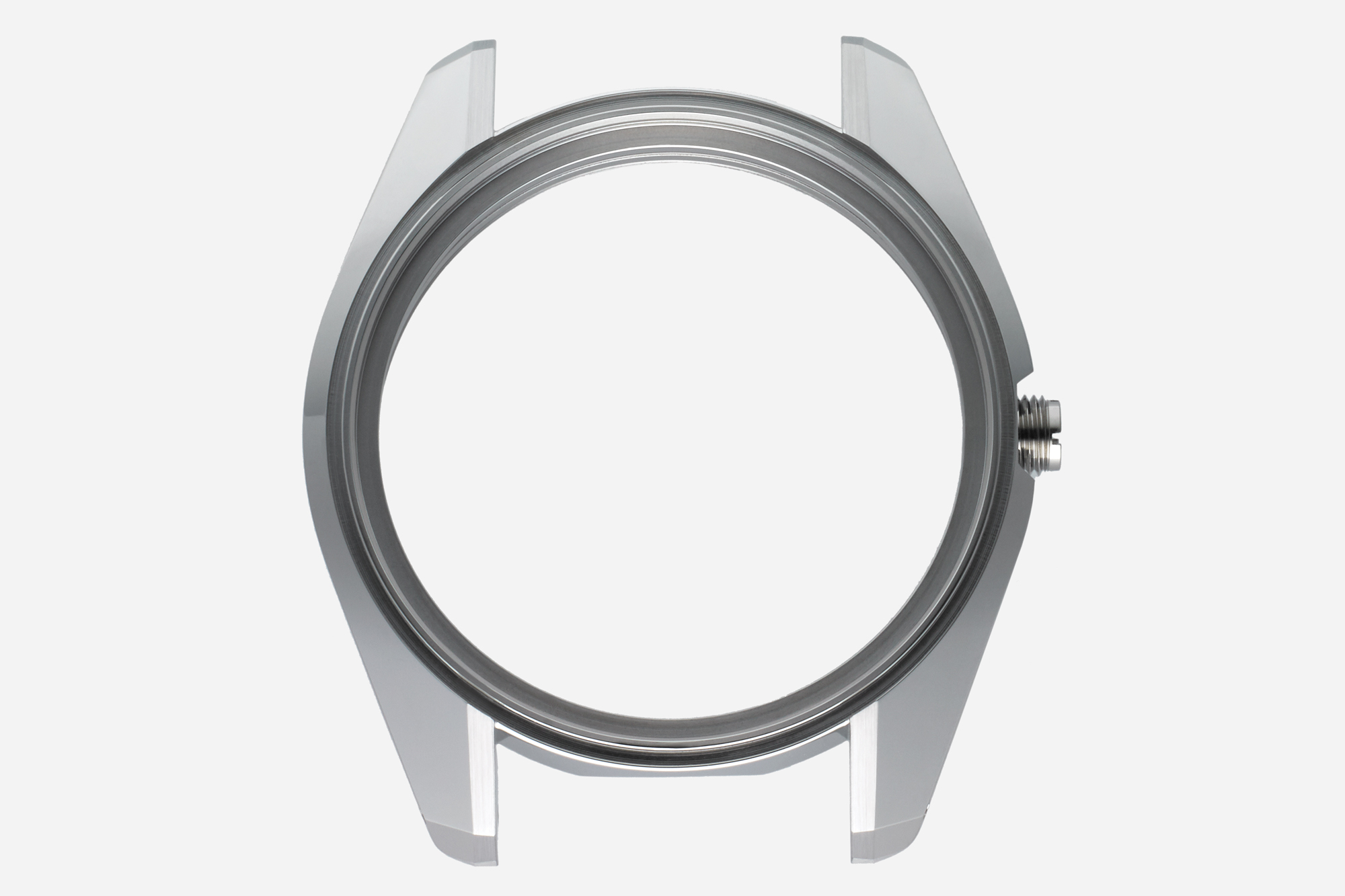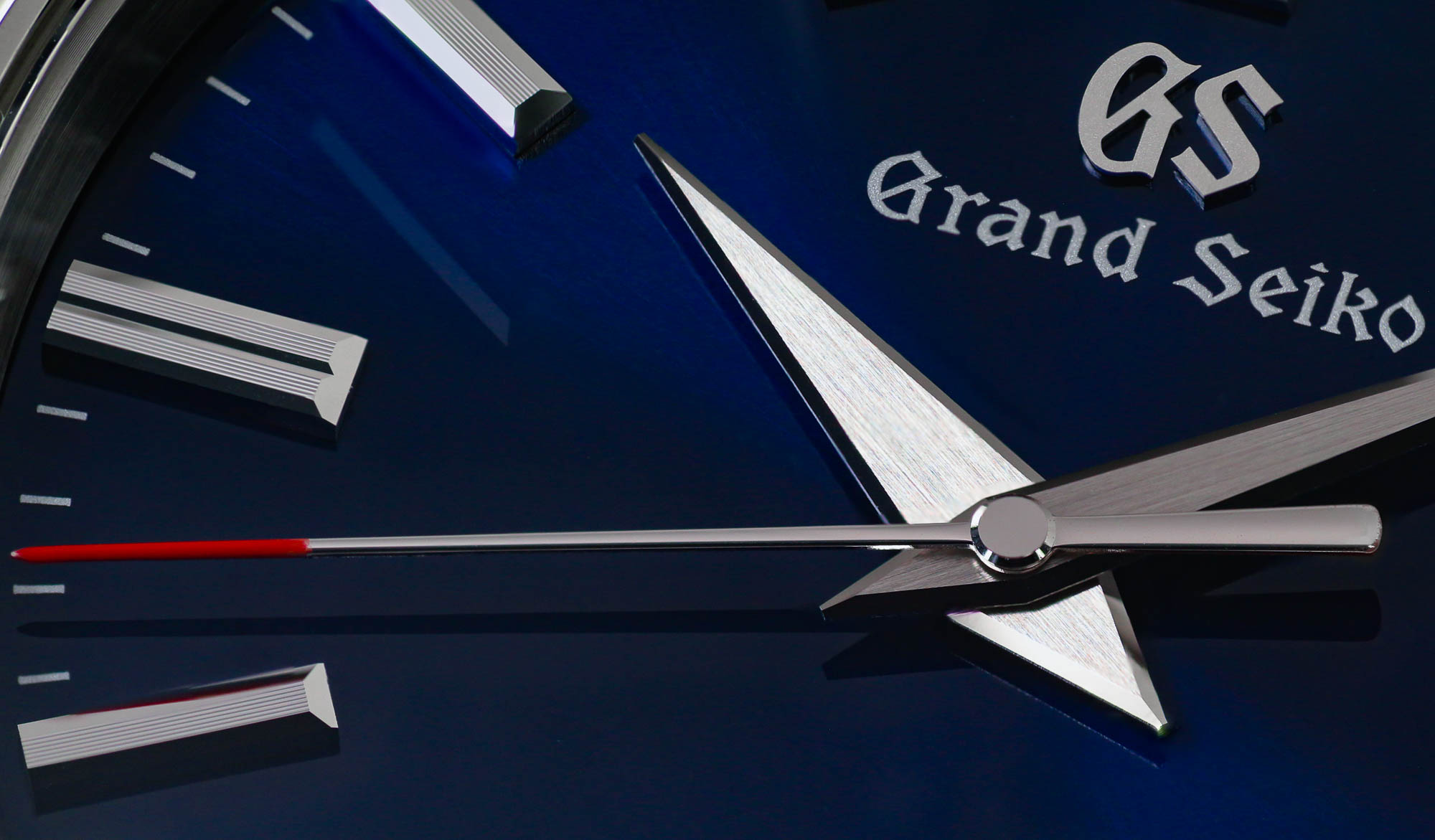
In 1967, Grand Seiko introduced the 44GS, a watch that would come to embody what is known as the Grand Seiko Style. With its distinct case geometry, distortion-free finishing, and eye-catching dial, the 44GS was then — and remains today — exemplary of Grand Seiko’s unique design language.
The Grand Seiko Style that went on to inform the 44GS was driven by the idea that Grand Seiko’s watches should “sparkle with quality.” To achieve that, Grand Seiko’s designers focused on the delicate interplay between light and shadow, and how to best express that dichotomy in a structural design. The 44GS case represented that ideal.
When Nobuhiro Kosugi, the head designer of the modern interpretation of the 44GS, took on the task of reimagining this iconic design for contemporary customers, he kept intact many of the guiding principles that made the original so special. In 2013, Grand Seiko unveiled the modern interpretation of the 44GS style, and today we’ll take a look at a stunning example of the modern 44GS — reference SBGJ201, a Hi-Beat GMT with a white Mt. Iwate dial.
Nobuhiro Kosugi
Nobuhiro Kosugi (born in 1952) began working in the watch industry in 1973 as a case designer. In 1993, he joined Seiko Instruments as a full-time designer, and two years later he was put in charge of design for Grand Seiko. In 1998, Mr. Kosugi was responsible for creating a new line of watches that would mark Grand Seiko’s return to mechanical watchmaking, and today these designs remain emblematic of many of the watches in Grand Seiko’s ever-popular Heritage Collection.

When Mr. Kosugi first presented his team with his design for the modern interpretation of the 44GS, they immediately recognized the complexity of the geometry and the difficulties that would cause in production. Specifically, the sharp edges, curved sides, and thin taper of each lug was going to be difficult to produce and mirror-polish in Grand Seiko’s Zaratsu technique.
“I always try to create a design which presents a new challenge.” — Nobuhiro Kosugi on pushing Grand Seiko’s craftsmen and women with the modern 44GS case.
Mr. Kosugi’s philosophy was to challenge Grand Seiko’s shokunin, or artisans, to take on designs that may seem difficult in the outset. Only by doing so could these artisans better their craft, which would in turn result in products that push the envelope in terms of what is deemed possible or impossible.
The design of the modern 44GS case is highly complex, featuring numerous flat surfaces, facets, and sharp lines where planes comes together. Such geometry is already difficult to manufacture, but the modern 44GS design was made even more complex through curved ridges along the case side (the original had a more straight, linear design defining the case side). This curvature allowed the case to fit more comfortably on the wrist, which was incredibly important to Grand Seiko, but it also made the case harder to finish.
Grand Seiko’s master craftsmen and women set to work. Ultimately, they pioneered a number of techniques that would allow them to finish the case of the 44GS in Grand Seiko’s signature Zaratsu method. The result was nothing short of stunning, and today the 44GS case remains a pillar of Grand Seiko’s catalog.
SBGJ201
Reference SBGJ201, a Hi-Beat GMT in Grand Seiko’s Heritage Collection, is one example of the contemporary interpretation of the 44GS design. The stainless steel case, measuring 40mm in diameter, is angular with distortion-free surfaces throughout. The case of the 44GS makes full use of the interplay of light and shadow, giving it a distinctly Japanese quality. In profile, one can see the gentle curvature of the mid-case and the taper of the lugs, a critical design detail that allows for a very comfortable fit when worn.

Officially named “Ridges of Mt. Iwate” but more commonly known as “Mt. Iwate,” the dial texture is inspired by the numerous ridged contours of Mt. Iwate, the large mountain that overlooks Studio Shizukuishi where Grand Seiko produces their mechanical timepieces. When Kosugi first devised this dial texture for reference SBGL001, the timepiece that debuted the Mt. Iwate dial, he imagined what Mt. Iwate might look like from a bird’s-eye view over the peak, with the ridges radiating from the center. At eye level, this texture gives the dial great dimensionality. When magnified, which can be seen below, the fine intricacies of the pattern really stand out, highlighting Grand Seiko’s excellent dial work. Ultimately, the result is a distinctive sparkle as the light plays with the many small grooves radiating out from the center of the dial.
This is carried through to the indexes and hands, which are highly faceted to allow light to play across the dial, an effect that extends out to the mirror-polished bezel. The GMT hand is a rich blue, a color achieved via hand tempering of the steel, and each hand is tempered individually at Grand Seiko. Because steel is sensitive to heat (to the point where exposure even a second too long could change the color), tempering Grand Seiko’s hands takes great skill and requires years of experience.

Powering the watch is Caliber 9S86, a high-frequency GMT. Running at 36,000 bph, Caliber 9S86 has a 55-hour power reserve and an accuracy rating of +5/-3 seconds a day. This is a “true” GMT movement, which means that the local hour hand is independently adjustable while the GMT hand remains fixed to “home” time. The benefit of this sort of GMT is that upon arriving to a new locale in a different time zone, the wearer can quickly jump the hour hand to the appropriate time on the 12-hour scale on the dial without having to reset the watch. The highly-decorated caliber can be viewed through the window in the case back.








